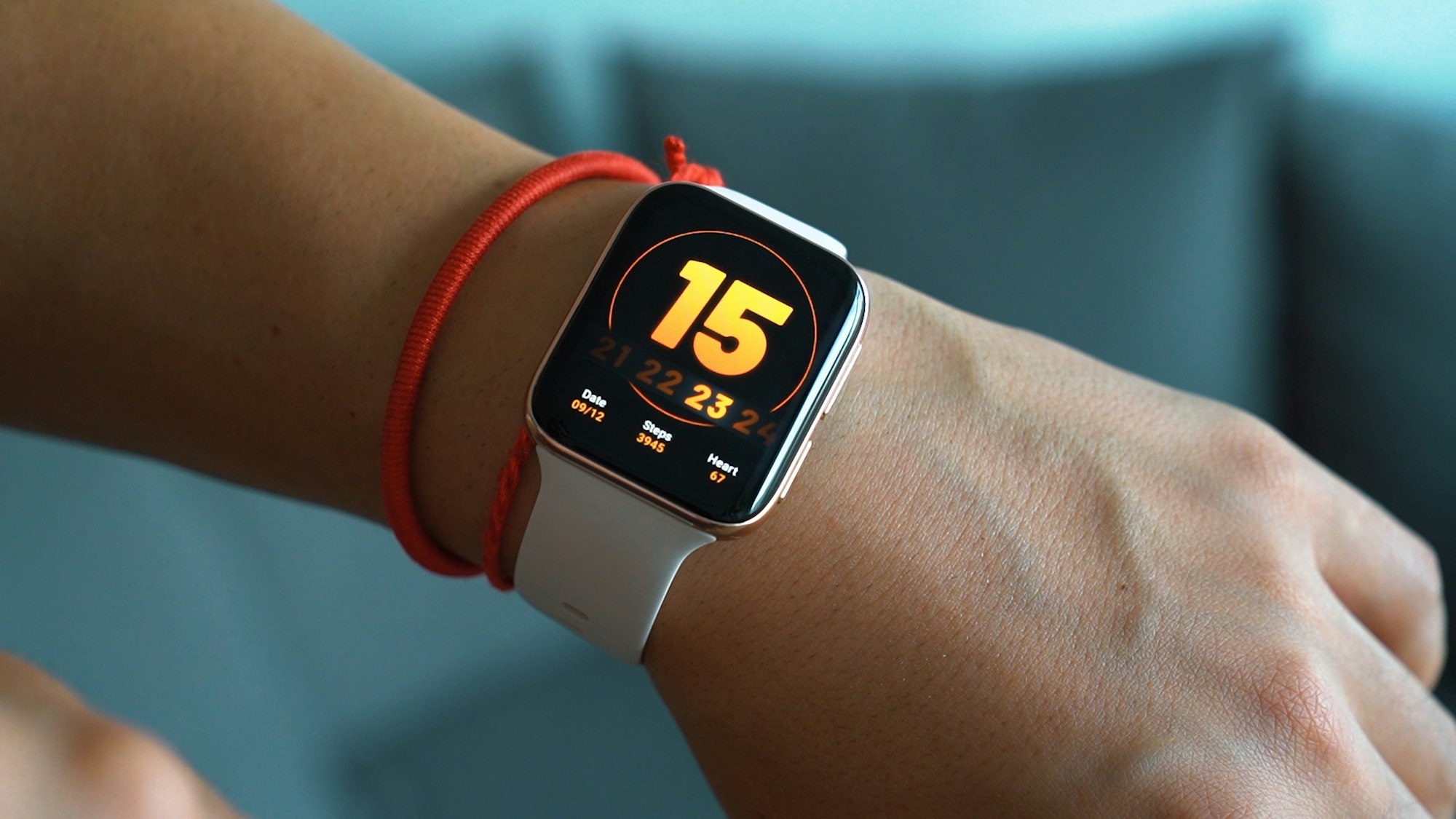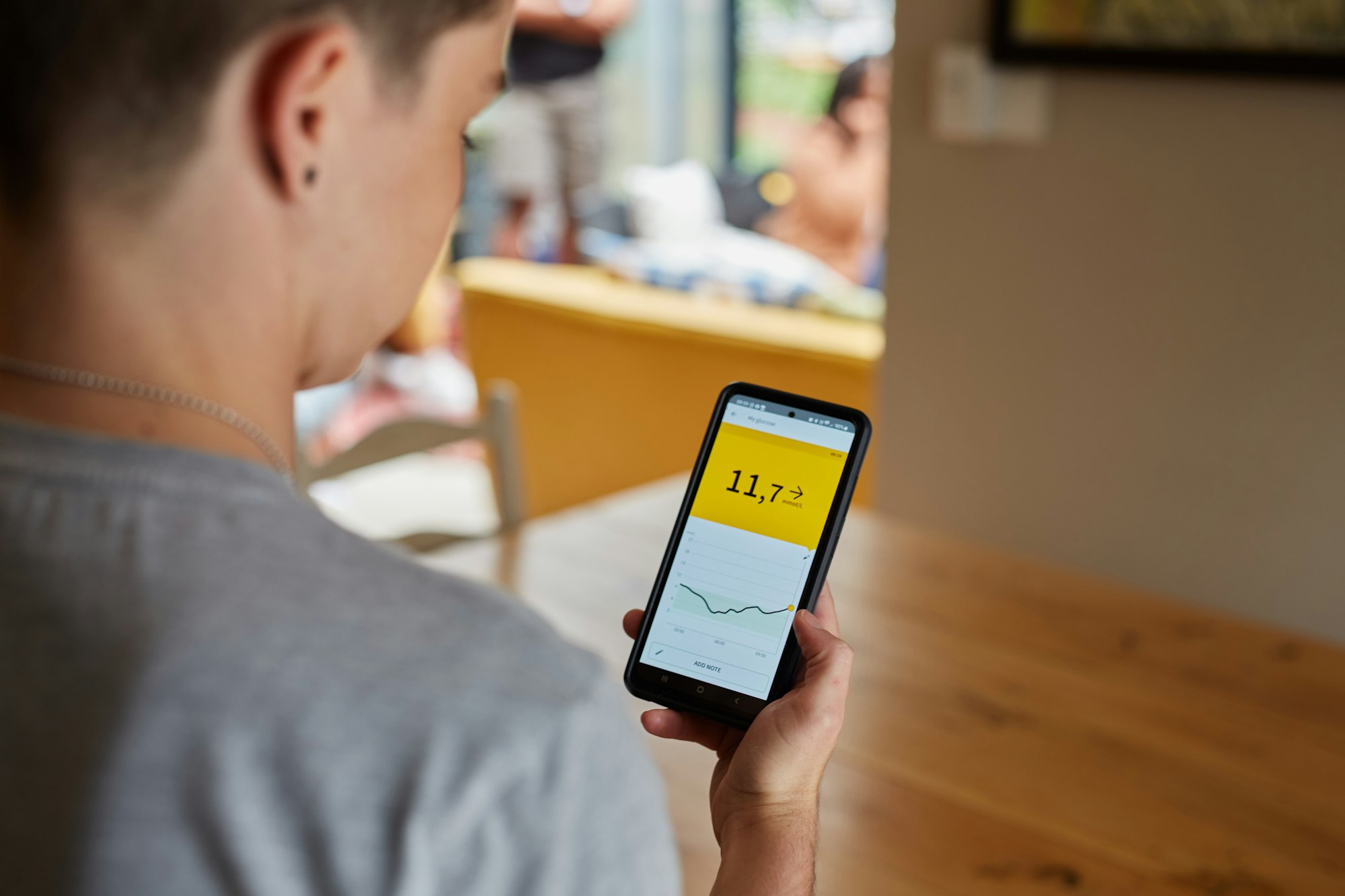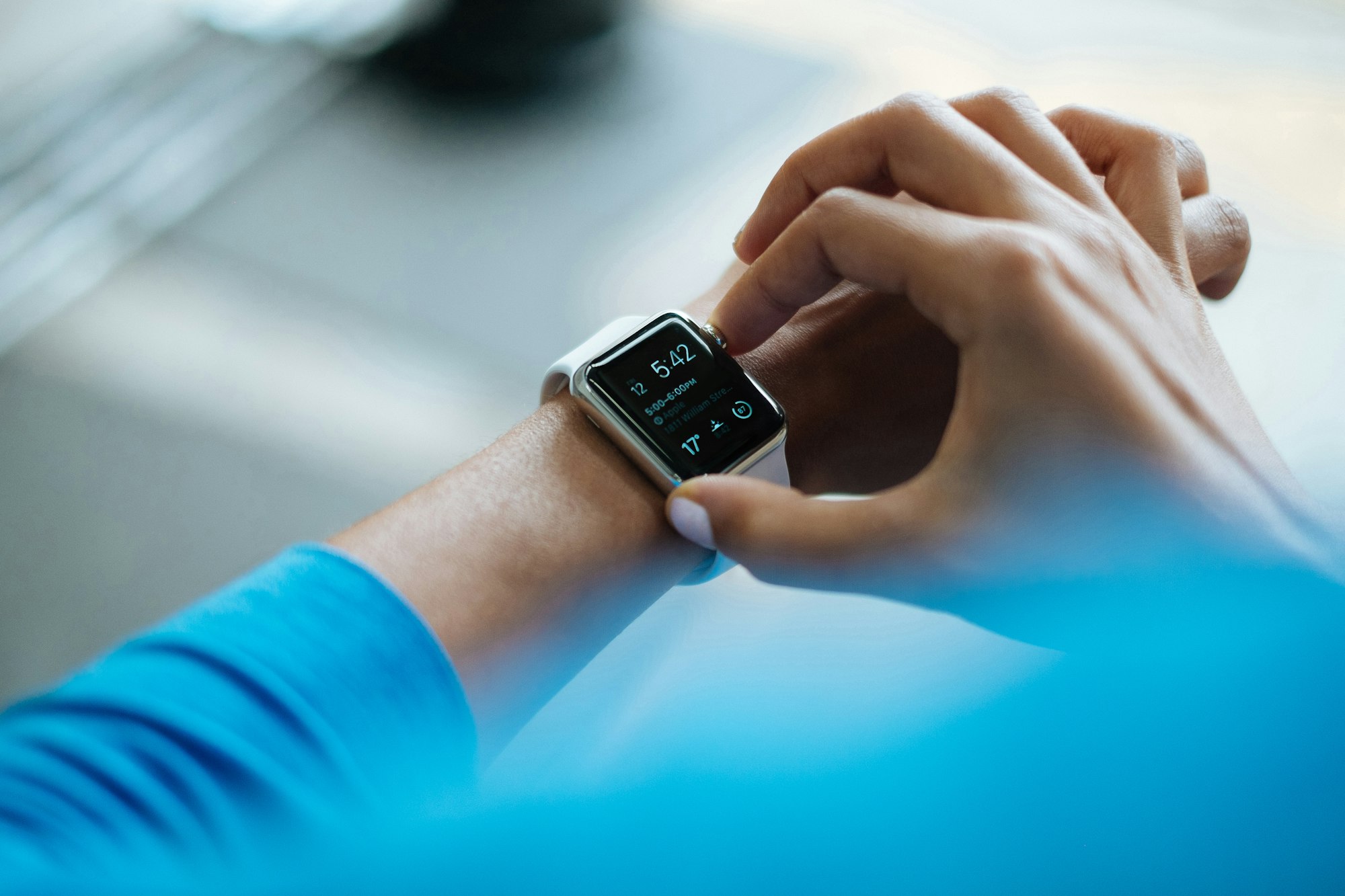
Discover how cutting-edge mobile app development for fitness, powered by AI & machine learning, driving digital transformation in the industry.
In today's fast-paced world, fitness has become a top priority for people seeking a healthy and balanced lifestyle. With the exponential growth of technology, mobile application development has emerged as a pivotal force in the fitness industry, revolutionizing how people approach their health and well-being. In this blog, we will explore the reasons to develop fitness apps, the vast scope of mobile development and innovation in the fitness industry, the main types of fitness apps, key factors to consider during app development, case studies of successful fitness apps, and the significance of integrating AI and machine learning in this domain.
Why Develop a Fitness App?
The development of a fitness app can be driven by multiple factors:
- Rise in demand for Personalized Fitness Solutions: With the growing awareness of health and fitness, people seek tailored solutions to address their unique fitness requirements. Fitness apps can provide personalized workout routines, diet plans, and progress tracking, catering to individual goals.
- Convenience and Accessibility: Fitness apps offer users the flexibility to exercise and monitor their health from the comfort of their homes or on the go. The convenience of accessing workouts and nutritional information anytime, anywhere enhances user engagement.
- Motivation and Accountability: Many fitness apps incorporate gamification elements, social features, and progress tracking, fostering inspiration and accountability among users. This leads to higher adherence and improved fitness outcomes.
Scope in the Fitness Industry

- Digital Transformation: The fitness industry has undergone a significant digital transformation. Fitness centers, personal trainers, and yoga studios now use fitness applications to expand their reach beyond physical locations. This approach enables them to offer online classes, virtual consultations, and access to fitness resources like workout videos and nutrition guides. With a digital presence, these businesses can cater to a broader audience, including individuals in remote areas or those who prefer to exercise from home.
- Health and Wellness Startups: The rise of health and wellness startups has created a thriving ecosystem for web and mobile app developers in the fitness industry. These startups often focus on specific niches within the fitness landscape, such as mental wellness, specialized training programs, or fitness challenges. Mobile application developers are crucial in creating innovative fitness apps that cater to these unique niches, providing users with targeted and effective solutions for their health and fitness needs.
- Integration with wearable devices: Wearable devices like fitness trackers and smartwatches have become increasingly popular among fitness enthusiasts. These devices collect valuable data on users' physical activity, heart rate, sleep patterns, etc. Application development offers opportunities to develop fitness apps that seamlessly integrate with these wearables, allowing users to access and analyze real-time data. This integration enhances the accuracy and efficiency of fitness apps, empowering users to make informed decisions about their health and fitness goals.
Main Types of Fitness Apps

- Workout and Exercise Apps: These apps offer a diverse range of pre-designed workout routines and exercises suitable for different fitness levels and objectives. They may include instructional videos and progress-tracking features to help users monitor their performance and improvements over time.
- Nutrition and Diet Apps: Nutrition apps provide personalized meal plans, calorie counters, and nutritional information to assist users in maintaining a balanced diet and achieving specific health or weight goals. These apps often include food databases, allowing users to log their meals and track their nutrient intake.
- Activity and Step Counter Apps: Activity and step counter apps focus on tracking users' physical activities throughout the day. They use the device's built-in sensors or sync with wearable devices to monitor steps taken, distance covered, and calories burned. These apps encourage users to stay active and promote healthier lifestyles.
- Yoga and Meditation Apps: Yoga and meditation apps offer guided sessions and mindfulness exercises to promote mental well-being, stress reduction, and relaxation. These apps often include audio or video instructions to help users perform yoga poses and meditation techniques correctly.
Key Factors to Look for in Fitness App Development

Developing a successful fitness app requires careful consideration of several key factors to ensure an engaging and practical user experience. Let's explore these factors in detail:
- User-Centric Design: A user-centric design is essential for any app, and fitness apps are no exception. The user interface (UI) and user experience (UX) should be intuitive, visually appealing, and easy to navigate. A clean, organized layout and clear, concise instructions enhance user engagement and satisfaction. Intuitive navigation ensures users can access features and information effortlessly, leading to higher user retention and overall app success.
- Personalization and Customization: Fitness is a highly individualized journey, and users have different fitness goals, preferences, and fitness levels. Providing personalized content and recommendations is crucial to meet the diverse needs of users. Fitness apps should allow users to set their fitness goals, dietary preferences, and workout preferences. Based on this information, the app can offer tailored workout plans, nutrition suggestions, and progress tracking, enhancing user motivation and adherence to their fitness routine.
- Integration with Wearable Devices: With the increasing popularity of wearable fitness devices like fitness trackers and smartwatches, integrating fitness apps with these devices has become a significant advantage. Seamless integration allows fitness apps to access real-time data, including physical activity, heart rate, and sleep patterns. This data can give users valuable insights into their fitness progress, helping them make informed decisions about their health and well-being.
- Social and Community Features: Incorporating social elements into fitness apps creates a sense of community and camaraderie among users. Challenges, leaderboards, and user communities foster a spirit of competition, motivation, and support. Users can compete with friends, share achievements, and participate in virtual fitness challenges. This social engagement promotes accountability and encourages users to stay committed to their fitness goals.
- Security and Privacy: Fitness apps handle sensitive user data, including personal health information, so ensuring robust security measures is paramount. Users need to trust that their data is safe and protected. Implementing secure authentication methods, data encryption, and adhering to privacy regulations are vital for gaining user trust and confidence in the app.
Case Studies
- Fitbit: Fitbit is one of the most popular fitness apps that has successfully integrated mobile application development with wearable technology. The app syncs with Fitbit's range of fitness trackers, offering users comprehensive insights into their activity levels, sleep patterns, and heart rate. Fitbit's user-friendly interface and social features have contributed to its immense popularity.
- MyFitnessPal: MyFitnessPal is a leading nutrition app with a vast database of food items and their nutritional content. The app allows users to track their calorie intake, set weight goals, and monitor their progress over time. Its seamless integration with fitness apps and wearables has made it a go-to choice for health-conscious individuals.
Need for a Fitness App in Today's Scenario
The COVID-19 pandemic has profoundly impacted daily life, including fitness behaviors. With lockdowns, social distancing, and restrictions on gym and fitness center operations, people have had to adapt to new ways of staying fit and healthy. In this challenging environment, fitness apps have emerged as essential tools, meeting the growing demand for accessible and effective fitness solutions. Here's how fitness apps have become a need in today's scenario:
- Home-Based Fitness Routines: Home-based fitness routines have gained popularity as people spend more time at home to minimize exposure to the virus. Fitness apps offer a diverse range of guided workouts that can be performed at home, allowing individuals to stay active and maintain their fitness levels despite the limitations.
- Digital Resources and Support: Fitness enthusiasts have turned to digital resources for their workout plans, nutrition guidance, and virtual coaching. Fitness apps provide a wealth of information, including video tutorials, personalized workouts, and nutrition plans, to support users' fitness journey.
- Safety and Convenience: Fitness apps provide a safe and convenient alternative to traditional gym settings. Users can access a variety of workouts and fitness programs from their smartphones or tablets, eliminating the need to visit crowded places and minimizing potential exposure to the virus.
- Social Support and Motivation: With the isolation and uncertainty caused by the pandemic, social support and motivation have become crucial for maintaining a consistent fitness routine. Fitness apps incorporate social and community features, such as challenges, leaderboards, and user communities, which foster a sense of belonging and motivation. Users can connect with like-minded individuals, share achievements, and participate in virtual fitness challenges, creating a supportive fitness community.
- Flexible Scheduling: Fitness apps allow users to work out at any time that suits their schedule. This flexibility is essential as many individuals balance remote work, family responsibilities, and other commitments during the pandemic.
- Continuity of Fitness Goals: The pandemic has disrupted many aspects of life, but fitness enthusiasts remain committed to their health and fitness goals. Fitness apps are vital in maintaining continuity, allowing users to track their progress, set new goals, and work towards achieving them, even during challenging times.
Integration with AI and Machine Learning

Integrating artificial intelligence and machine learning in fitness apps enhances the user experience and elevates the app's capabilities. Here's how artificial intelligence and machine learning add value to fitness apps:
- Personalized Recommendations: AI algorithms analyze user data, including fitness history, preferences, and performance, to deliver customized workout routines and nutrition plans. By understanding each user's unique needs and fitness objectives, AI can optimize fitness outcomes, keeping users engaged and motivated.
- Predictive Analytics: ML can analyse user behavior, patterns, and industry trends to anticipate user needs and preferences. These data-driven insights help fitness app developers make informed decisions about app features, content updates, and new offerings, ensuring the app remains relevant and engaging for users in the long run.
- Virtual Coaching: AI-powered chatbots and virtual coaches can provide real-time feedback and guidance to users during their fitness journey. These virtual assistants replicate the experience of having a human trainer, offering exercise tips, answering user queries, providing motivational messages, and assisting users during workouts. Virtual coaching enhances the overall user experience, making it more interactive and personalized.
- Injury Prevention: AI algorithms can analyze exercise techniques and movements to detect potential risks. By providing real-time feedback on users' forms and suggesting corrections, fitness apps can help users perform exercises safely and effectively. This feature is precious for beginners or those trying new workouts without physical supervision.
Conclusion
In conclusion, the scope of mobile app development in various industries, including the fitness sector, is vast and promising. The increasing digital transformation, demand for personalized solutions, integration with wearable devices, and social engagement present exciting opportunities for mobile app developers to create innovative and user-centric fitness apps.
Whether you are a fitness center, health startup, or an individual fitness trainer, We at Droot have expertise that can help you create a compelling and feature-rich fitness app that meets the unique needs of your target audience. From concept ideation to app design, development, and deployment, we provide end-to-end solutions to ensure the success and scalability of your fitness app.
In a world where digital solutions are becoming increasingly vital, Droot can be your trusted partner in shaping the future of the fitness industry through cutting-edge mobile app development. Together, we can empower fitness enthusiasts, promote healthier lifestyles, and contribute to the well-being of individuals across the globe. So, if you are ready to embark on your fitness app journey, let us be your reliable ally in achieving your goals.